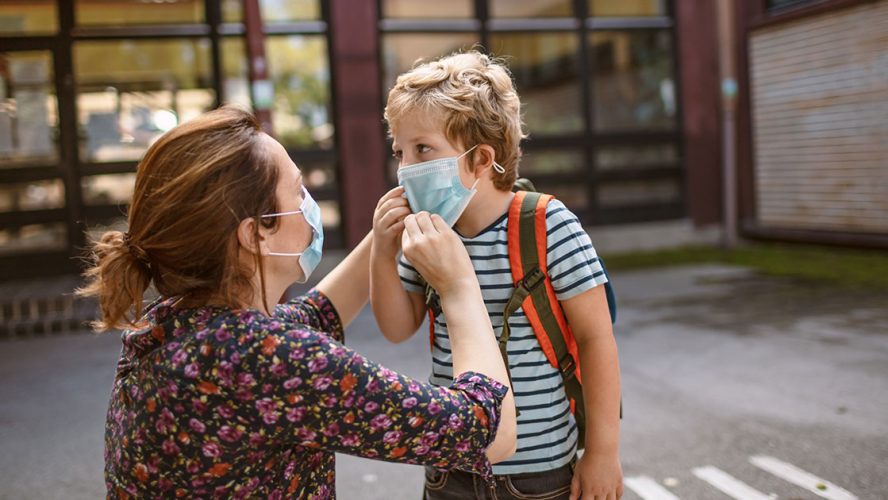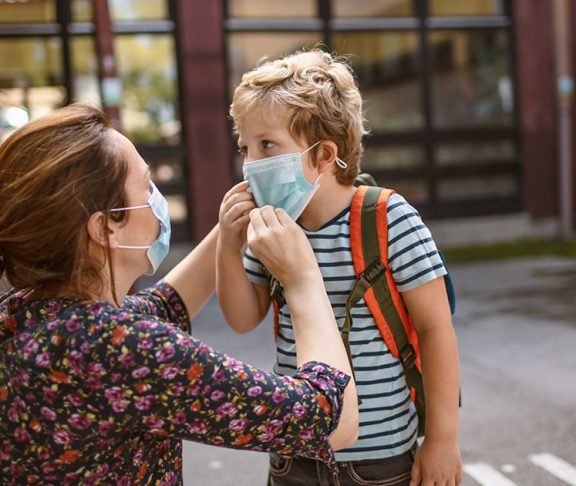Schools are reopening, but the dual threat of COVID-19 and the familiar flu requires a new approach to disinfecting.
Across the country, more than 130,000 schools are struggling to open — and stay open safely — in the midst of a flu season like no other. Every year the ordinary influenza causes many students and teachers to get sick and lose time — and other pathogens like norovirus, salmonella, and E. coli are particular threats to young children. This year, nearly 60 million students — and 7 million teachers and administrators — are also dealing with a global pandemic.
What makes this challenge especially difficult is the overlap in symptoms between the flu and COVID-19. “The symptoms of the two illnesses are almost identical,” says David St. Clair, chairman of Halosil International, Inc., a leading manufacturer of disinfectant products. “If individuals happen to contract both illnesses simultaneously, their condition will be much harder to manage successfully due to the overwhelming effect on their immune systems.”
Understanding spread
Reopening schools during the pandemic has stoked fears that classrooms could be powerful vectors for the spread of both diseases. In past years spread of the flu has been driven largely by school-age children, according to the Centers for Disease Control and Prevention. That’s heightening fears that the same may be true for COVID-19. And some studies indicate that teachers and other school staff are infected at twice the rate as the kids they teach.
Many schools are struggling with the new cleaning and sanitizing requirements the pandemic requires. One solution schools are adopting is “whole room disinfection.” This is a relatively new method of disinfecting surfaces that doesn’t rely on constant spraying and wiping down, which is labor intensive and unreliable. Spray products must wet all surfaces and they must stay wet for several minutes in order to be effective. Whole room disinfection systems on the other hand touch all surfaces without exposing the applicator and does not wet the surfaces, helping to protect sensitive electronics and papers from damage. An example of a whole room disinfection system is Halosil’s Halo Disinfection System® product. “The most effective and affordable whole room systems create a fog that fills the entire space being treated without wetting any surfaces while still killing up to 99.9999 percent of the hardest-to-kill germs,” explains St. Clair.
Legally, whole room disinfection systems need to be approved by the Environmental Protection Agency. “The EPA needs to have registered the specific disinfectant like HaloMist TM to be used with a specific fogging machine like the HaloFogger®,” St. Clair explains. “Otherwise, it is illegal to claim that fogging that disinfectant will kill any germs at all.”
Looking forward
Recent encouraging news of vaccines for COVID-19 and other breakthroughs have been welcome, but St. Clair cautions against being overly optimistic. “While vaccines will certainly help tremendously in the longer term, we should plan on using the tried-and-true methods described for at least all of 2021,” he concludes.
Flu vaccines are not guaranteed to work with the type of influenza virus that emerges each year, and any approved COVID-19 vaccine will take time to manufacture and distribute. Some vaccines will face other obstacles — Pfizer’s, for example, must be stored at negative 94 degrees Fahrenheit, which makes getting it out to people difficult.
That means schools will have to continue to follow best practices: requiring masks for students, parents, and teachers, practicing standard social distancing guidelines, making hand sanitizer available — and ensuring both students and staff use it. These practices, in addition to whole room disinfection products like the Halo Disinfection System, can help to minimize any risk of infection — making it possible to keep our schools open with peace of mind.


